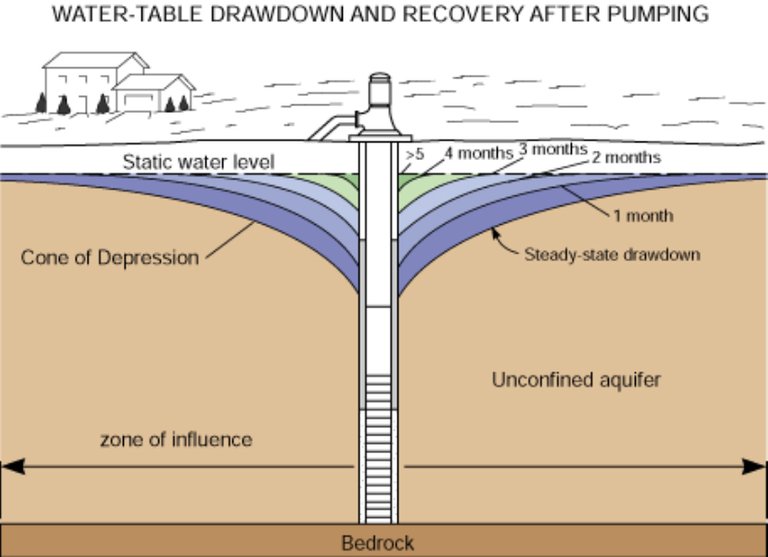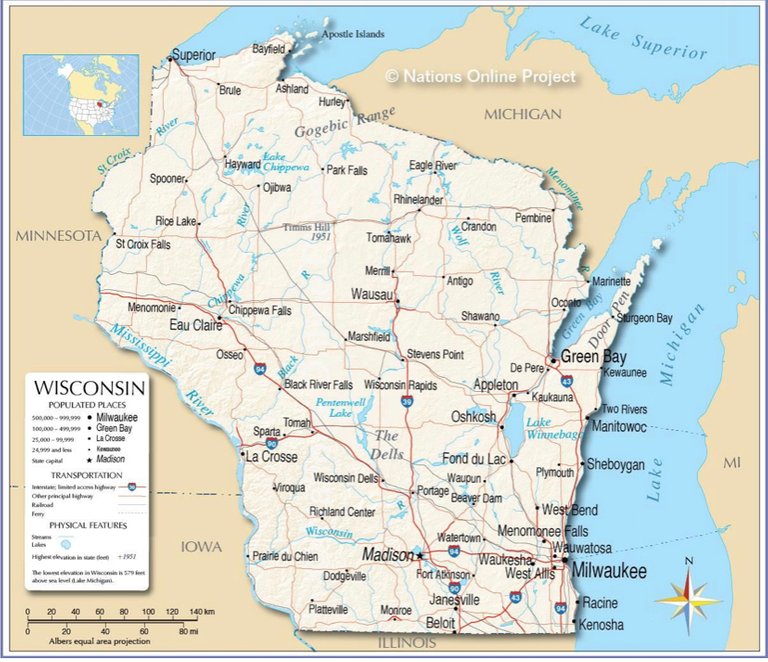Groundwater Drawdown in SE Wisconsin, USA
In the following series I will discuss the current conditions of groundwater drawdown in southeastern Wisconsin. This has significant impacts on the United States as it is one of its largest freshwater suppliers and has been offered as an option to supply other drought stricken watersheds with drinking water.
Introduction
Seventy percent of Wisconsin's drinking water comes from groundwater and is also utilized for countless other processes such as agricultural uses, industrial uses, as well as the many environmental ecosystems that depend on ground water in order to be sustainable.
With Wisconsin's groundwater in such high demand it is not surprising to see alarming levels of drawdown occurring throughout the state. This can have major implications in the near future and we are starting to see the effects already today.
Some Background
The majority of the supply of fresh water comes primarily from aquifers. Aquifers are large structures underground that hold water that has been collected and cleaned through layers of soil and sediment.
A drawdown is when the level of water held in those aquifers is reduced, usually due to the presence of man made wells. This happens because the rate of recharge of an aquifer is a far slower process than that of the rate in which it is being removed.
When an aquifer experiences a drawdown the ground water can also decline in what is called a cone of depression, thus causing deeper drilling and lower availability of water.
Additionally, many streams, lakes, and wetlands are fed by complex groundwater systems and when water tables are lowered these ecosystems suffer (Raynes and Bradbury 2011, 569-70).
Southeastern Wisconsin is one of the most severely affected areas in Wisconsin in regards to watershed drawdown. Pumping and drilling water wells began there in the late 1800s and continues today.
This has had such a great affect that ground water used to flow west to east into Lake Michigan to recharge the lake. Now, Lake Michigan recharges much of the groundwater in the Milwaukee area (Wisconsin Department of Natural Resources).
As water continues to be pumped from groundwater, Lake Michigan will have to contribute more of its water to recharge those nearby systems.
Reference List (Entire Series)
Environmental Protection Agency. Indoor Water Use in the United States.
http://www.epa.gov/WaterSense/pubs/indoor.htmlHayashi, M. and Rosenberry, D. O. (2002), Effects of Ground Water Exchange on the Hydrology and Ecology of Surface Water. Ground Water, 40: 309–316.
Rayne, Todd W., and Kenneth R. Bradbury. 2011. "Evaluating impacts of subdivision density on shallow groundwater in southeastern Wisconsin, USA." Journal Of Environmental Planning & Management 54, no. 5: 559-575.
United States Geological Survey. Protecting Wisconsin’s Groundwater through Comprehensive Planning. http://wi.water.usgs.gov/gwcomp/integrate/develop.html
Wisconsin Department of Natural Resources. Status of Groundwater Quantity in Wisconsin.
http://dnr.wi.gov/topic/groundwater/documents/pubs/quantity.pdf




Howdy sir badger! Man, I hate that this is happening to the aquifers, we've been seeing the levels drop for decades.